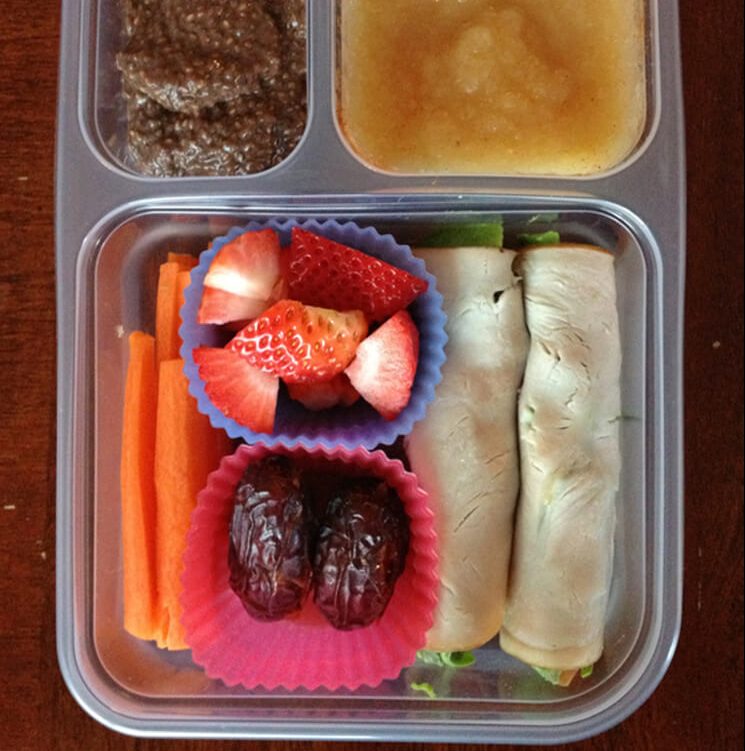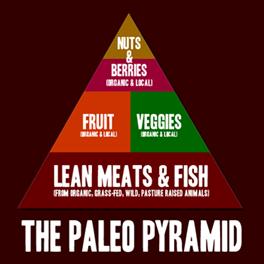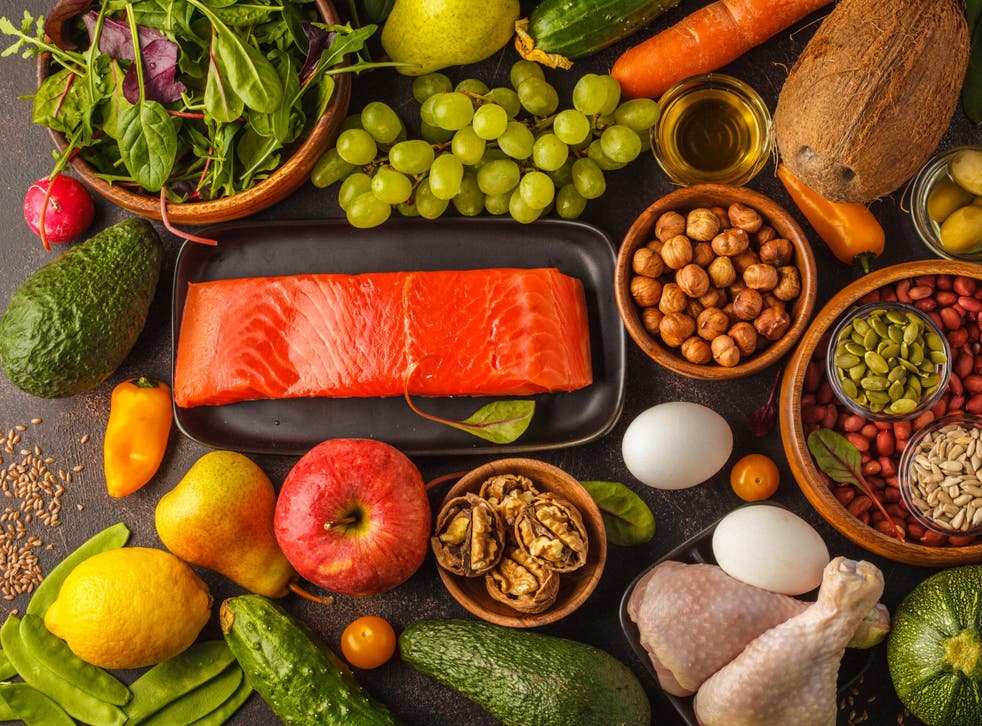
The paleo diet emphasizes eating food that our ancestors would have eaten. This diet includes foods like apricots, dried pumpkin seeds, and banana with almond butter. It can also be filled with sweet potatoes, chicken, and other vegetables. EatingWell recognizes the importance of certain foods, even though the paleo diet can seem restrictive. Here, we'll discuss which ones you can eat while still maintaining a healthy diet.
Pola makanan paleolithic manusia
Christina Warinner, Ph.D., studied pola makan manusia purba and mitos-mitos pola makanan paleolithic manusia in 2010. She reveals that manusia Paleolithic consumed large amounts of daging and ate all kinds of meat. This myth was widely believed by paleolithic people, but is now considered outdated and irrelevant.
Diet paleo, also known as the diet of the manusia gua, is a way to eat similar to what manusia gua and man used to eat. Their kesehatan is improved and they preserve their heritage. However, this diet is not for everyone. This diet is not suitable for everyone and is only recommended for a small number of people.
The lukisan in the Ramasokat is made up of two types of kelompokan: ceruk and lukisan gua. They were found in the Liabalano and Sulawesi Tenggara areas. The lukisan gua includes a variety of proteins, carbohydrate, and amino acids. These nutrients can support healthy living and help us understand how humans evolved.

The modern diet has many benefits, but it also comes with risks. People who eat foods high in nutrients such as those from the Paleolithic Era will be more susceptible to developing diseases. Clean eating will help reduce your risk of disease. And if you are interested in eating healthier, try the Clean Eating diet. The benefits of eating this way are obvious: a diet low in fats can be good for your health, and you won't get sick from overeating.
Foods that are allowed on a paleolithic diet
The majority of processed food contains added sugars, vegetable oils and artificial sweeteners. This can have adverse effects on your health. In excess of salt, refined sugars and other sweeteners can lead you to becoming obese. Salty foods can also contribute to heart disease. Vegetable oils are also controversial. The American Heart Association recommends corn oil and safflower as alternatives to canola oil. These oils contain high levels omega-6 fatty acids.
Many commercial paleo diets prohibit dairy products, but others have stricter restrictions. Paleolithic diets allow certain foods, such as lean pork loin and roasted chicken with onion, carrot stuffing and steam broccoli. Other paleo diets allow honey and maple syrup in small quantities. The benefits of this diet have been supported by scientific research at varying levels.
The high levels of phytotic acid found in legumes is something paleo enthusiasts recommend you avoid. These substances prevent the absorption and utilization of essential minerals. However, they are permitted in some cases. It's tempting to eat beans and potatoes but it's not recommended that you do so as often as other processed foods. You should instead include lots of fruits, vegetables and other healthy foods in your daily meals.
Guidelines for Paleolithic eating
Although they are quite different from the usual modern diet, the Guidelines to Eating a Paleolithic Diet share many of the same principles. The Paleolithic diet is primarily based on animal products but it is rich in plants so there are no restrictions. It is important to remember that your genetic makeup may not allow you to eat this diet. Additionally, the increased meat consumption may be detrimental to your health. Paleolithic food is not for everyone.

Paleolithic diet excludes the most popular food groups, including dairy products. These key food groups are at high risk for nutritional deficiencies. Tooth decay is caused by calcium deficiency. Furthermore, calcium plays a role in blood clotting and muscle contraction. Moreover, whole grains reduce the risk of heart disease, stroke, and type 2 diabetes. However, since grains were virtually eliminated, you might be at high risk for calcium deficiency.
There are many guidelines that Paleolithic people should follow when eating. It emphasizes eating nutrient-rich plants and proteins, and limits carbohydrates and processed foods. It is important to adhere to the guidelines so that you don’t get carried away. Each person's paleolithic lifestyle is unique. It is important you realize that the Paleolithic food plan is based on an ancient lifestyle.
FAQ
How do you get hired as a Chef?
First, you need to earn a culinary arts diploma in order to get a job working as a chef. The next step is to join a professional association like the American Culinary Federation. This organization offers certification exams and networking opportunities.
How can I be hired as a chef?
It is possible to get a job in the kitchen by word of mouth. You might be able to find out about a restaurant looking for additional staff through your family and friends. Restaurants often post openings on websites and bulletin boards.
What is the best career path for someone who wants to be a chef? How can I get started in my career as an chef?
An apprenticeship is a good way to start your career as a chef. Apprenticeships offer the chance to work for several year without any tuition fees. After your apprenticeship, you may apply for a role as a sous chef. Sous chefs are responsible for supervising cooks and helping them prepare salads or desserts. They oversee all aspects of the restaurant's operation.
Which method is best to learn how to cook?
Cooking is a skill that every person should learn. It's a great way to experience delicious food without having to learn how to cook. The first thing you need to do when learning to cook is to find a recipe that you like and follow it closely. You'll then want to practice small adjustments until you feel confident making the dish. Finally, try cooking for others. This will help you improve at cooking and also allow you to test your skills.
Statistics
- under 10 Kids have been taught that there is special food just for them, and Fiese says that 10 percent of kids will throw a tantrum if they don't get the food they want. (washingtonpost.com)
- According to the BLS, chefs earn $58,740 a year. (learnhowtobecome.org)
- On average, chefs earn $58,740 a year, according to the BLS. - learnhowtobecome.org
External Links
How To
How to make an omelet that is perfect
Omelets are a favorite breakfast food of mine. How can you make them perfectly? I've tried many different methods and recipes, but none of them seem to work! So I am sharing some tips and tricks today to help you make fluffy, delicious omelets every morning.
When making omelets, it is important to be aware that eggs can be temperamental. It is important that eggs are fresh from an organic market and kept cool until used. The yolks and whites will not form properly if they aren't kept cold enough. This makes your omelets look weirdly colored. If you want to make omelets right away, it's best not to use eggs that are too cold.
You might also try separating the egg before adding to the pan. Because this could cause your omelet to become curdled, you don't want any yolk to be mixed with any white.
You might burn the bottom of the egg if you place the egg directly on the stovetop. This could ruin the texture of your omelet. Instead, heat the egg in a microwave for 10 seconds and then place it in a pan. The heat from the microwave cooks the egg just enough without overcooking it.
Next, let us talk about how to mix the eggs. Mix eggs well together. Turn the bowl upside down and grab the whisk to do this. Next, shake the bowl vigorously. This way, the air inside the bowl gets whipped around and mixes the egg thoroughly.
Now it's time to have fun: pour the milk into the mixture. The first step is to pour half of the milk in the beaten eggs. Next, fold the eggs into the remaining milk. Do not worry if you see streaks of egg; they will disappear when the omelet is flipped.
After folding the eggs, place the pan on medium heat and wait for the oil to start sizzling. Once the oil starts getting hot, add 1/4 cup of butter to the pan and swirl it around to coat the entire surface of the pan. Carefully open the pan's lid and add salt to the pan. A pinch of salt will help prevent the omelet from sticking to the pan.
Cover the pan once the omelet is formed and allow it to cool completely. Flip the omelet with a spatula, or flip it upside down. Cook the opposite side for another minute. Remove the omelet from the pan and serve immediately.
This recipe works best when you use whole milk.